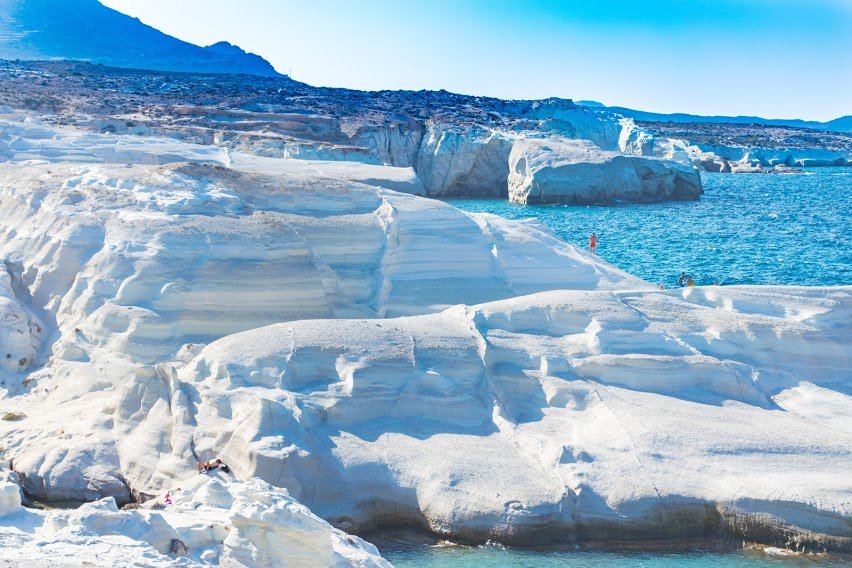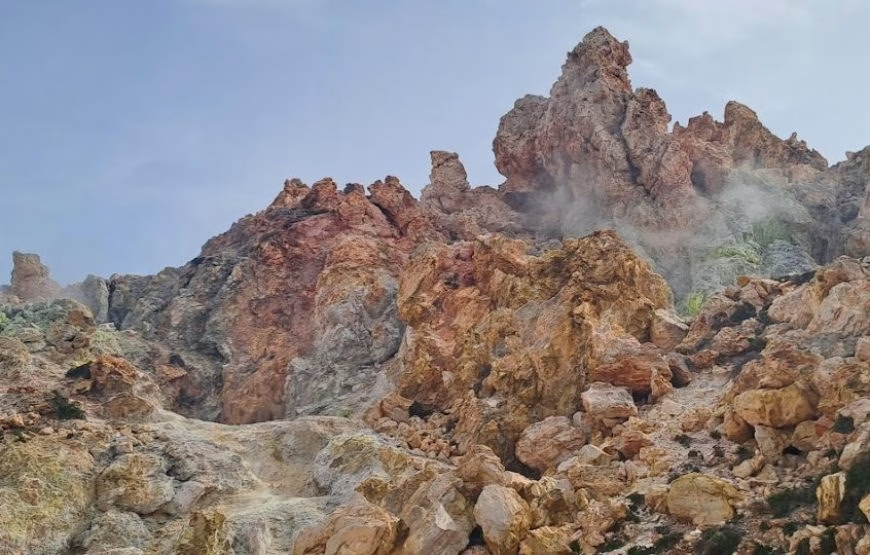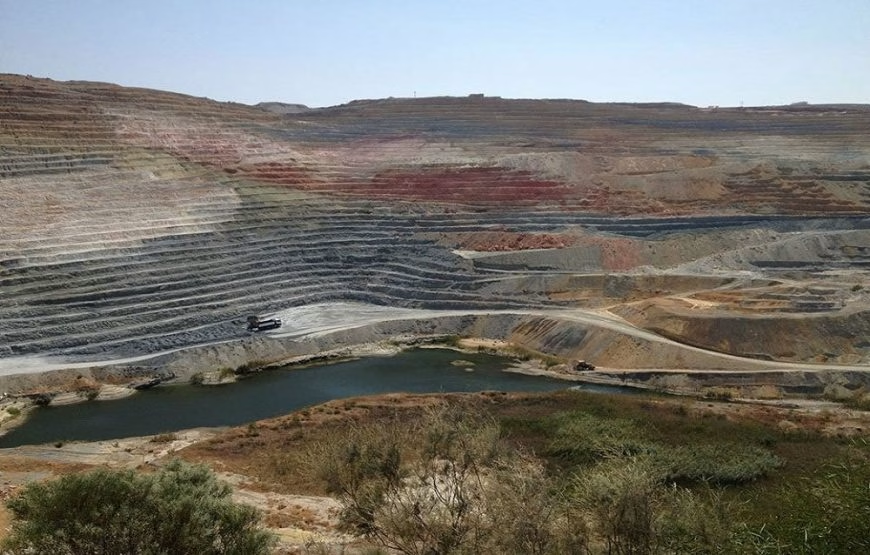If you’ve ever set foot on Milos, you’ve probably noticed there’s something truly unique about the island’s landscape. Those surreal, moon-like cliffs, the vibrant colors of the beaches, and the dramatic rock formations—they all tell a fascinating story. And it all begins with the island’s fiery past. Yep, Milos was shaped by volcanic activity, and you can see the evidence of this geological history all around you.
A Blast from the Past: The Birth of Milos
Let’s rewind the clock—way back to millions of years ago. Milos, like many islands in the Cyclades, was born from volcanic activity. But what makes Milos special is that its landscape was largely shaped by a series of volcanic eruptions. Imagine molten lava spewing from the earth, forming the rugged terrain we see today. Over time, the cooling lava and volcanic ash created the island’s unique topography.
The island is essentially a volcanic caldera, which is a fancy way of saying that it’s the result of a massive volcanic explosion that left behind a large crater. This explosive history is what gives Milos its incredible variety of rock formations, mineral deposits, and those stunning white cliffs you see in places like Sarakiniko.
Sarakiniko: The Moon on Earth
Speaking of Sarakiniko, if you’ve seen photos of Milos, you’ve probably come across images of this iconic spot. The bright white rock formations against the deep blue sea look like something straight out of a sci-fi movie. The smooth, undulating rocks were formed by volcanic activity and have been eroded over time by wind and waves, creating that otherworldly landscape.

Walking on Sarakiniko feels like you’re on the surface of the moon—except there’s a sparkling Aegean Sea right beside you! It’s one of those places where the island’s volcanic origins are on full display, making it a must-visit.
The Colors of Milos: A Geologist’s Dream
Milos isn’t just about white rocks, though. The island is a riot of colors, thanks to the various minerals deposited by volcanic activity. In places like Firiplaka and Tsigrado, you’ll find beaches with red, yellow, and orange hues. These colors come from minerals like sulfur, iron, and manganese, which were brought to the surface by volcanic eruptions and later shaped by the elements.
These vibrant colors aren’t just pretty to look at—they’re a geologist’s dream. The rich mineral deposits have made Milos an important site for mining since ancient times. Even today, the island’s economy benefits from the extraction of minerals like bentonite and perlite.

Caves and Hot Springs: The Island’s Hidden Gems
Milos’ volcanic history isn’t just visible on the surface—it’s hidden underground too. The island is dotted with caves, many of which were formed by volcanic activity. One of the most famous is the Sykia Cave, where a collapsed roof has created a natural skylight, illuminating the crystal-clear waters inside. It’s a magical spot that feels like a secret world, all thanks to the island’s fiery origins.

And then there are the hot springs. Milos has several geothermal springs, where water heated by underground volcanic activity bubbles up to the surface. These hot springs have been used for their therapeutic properties for centuries, and they’re still a great place to relax and soak in the island’s volcanic essence.
Volcanoes, Villages, and Culture
The volcanic activity that shaped Milos didn’t just create stunning landscapes—it also influenced the island’s culture and history. The ancient inhabitants of Milos took advantage of the island’s rich mineral resources, becoming skilled miners and traders. The famous Venus de Milo, one of the most iconic statues in the world, was found on this very island, and it’s a testament to the island’s rich history.
Even the island’s architecture has a volcanic touch. The traditional whitewashed houses with their flat roofs are designed to withstand the island’s climate, which is partly shaped by its volcanic origins. In some villages, you’ll find homes built directly into the rock, using the natural landscape as part of their structure.
A Living Landscape
Milos isn’t just a static museum of geological history—it’s a living landscape that continues to evolve. The island’s geothermal activity is still present, as evidenced by the hot springs and the occasional tremor. This means that Milos is a place where the forces of nature are still at work, shaping the island’s future just as they have shaped its past.
When you visit Milos, you’re not just seeing an island—you’re experiencing millions of years of geological history. Every cliff, beach, and cave tells a story of volcanic eruptions, shifting earth, and the relentless power of nature. It’s a reminder of the incredible forces that have shaped our world and continue to do so.
So next time you’re exploring Milos, take a moment to appreciate the island’s volcanic origins. Whether you’re lounging on a colorful beach, hiking along a rocky trail, or marveling at the moon-like landscape of Sarakiniko, remember that this beautiful island is the result of nature’s most powerful forces.
Milos isn’t just a place to visit—it’s a geological wonder, a living testament to the dynamic processes that have shaped our planet. Enjoy every moment, and let the island’s ancient history deepen your appreciation for its breathtaking beauty.


Comment (0)